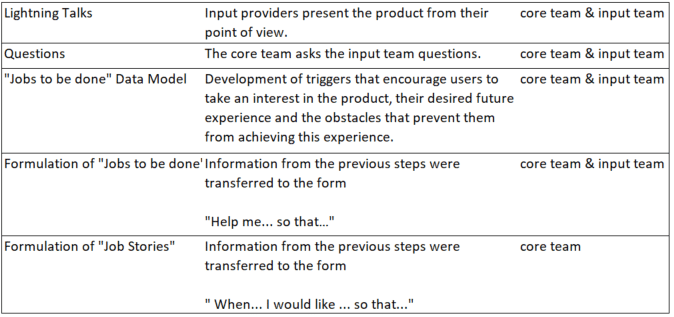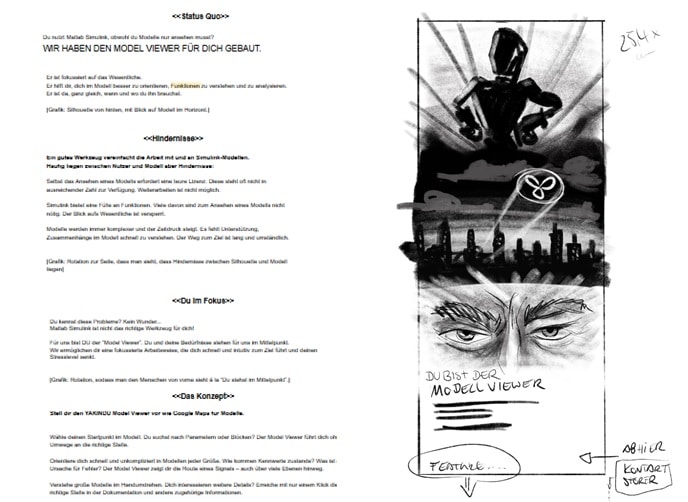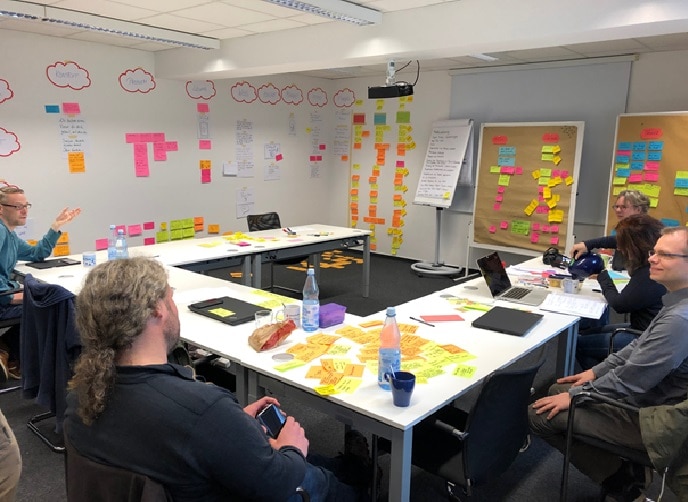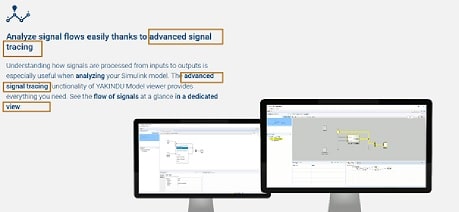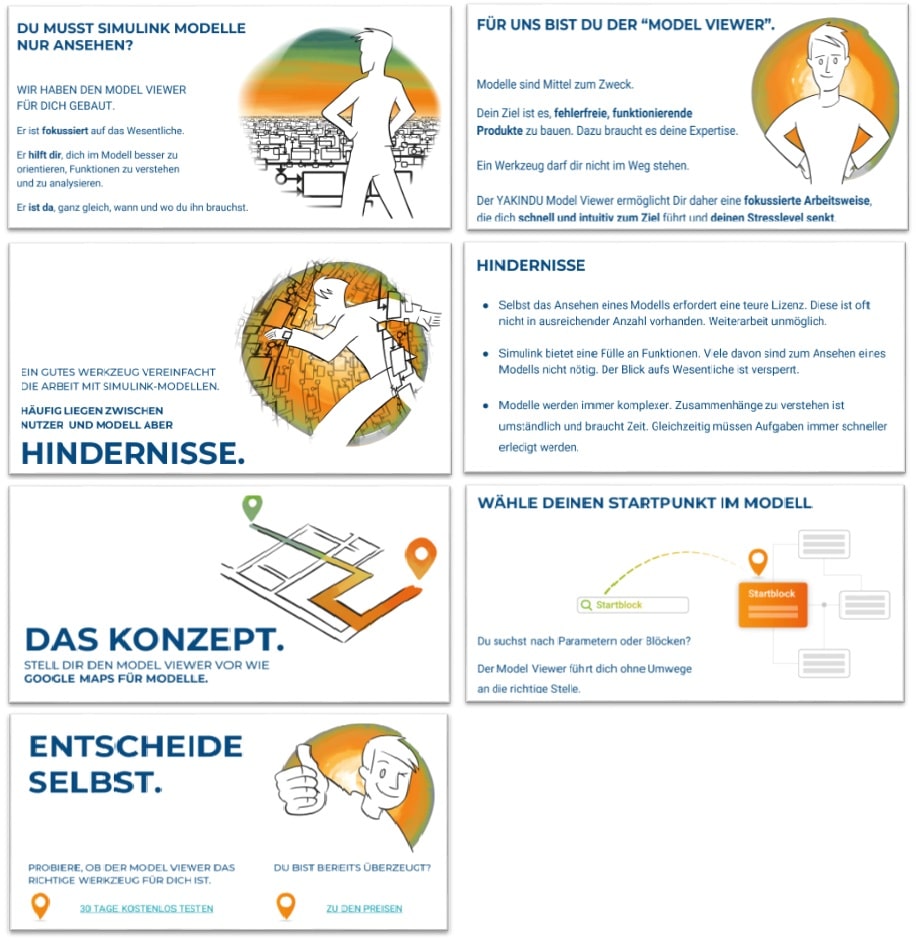Jobs to be done …
When we develop products, we naturally want to sell them as well. Unfortunately, the pressure of competition is enormous today – users can choose between many different products. So we have to use our marketing measures to hit the nerve of the user, identify and address his needs and thus arouse his interest in our product. It’s not that easy. In this article I would like to tell you how we develop marketing stories in a 3-day creative workshop that are tailored to the needs of users.
Getting away from “product featuritis” in marketing
Unfortunately, it is often the case that too little attention is paid to the needs of the user in product presentations, but rather functions of the product are listed. Here is a brief example:
Why do we buy a camera? To take pictures? Because the number of mega pixels is extremely high? Because it has a 1,000x zoom? Because it takes easily recognisable pictures in the dark? In a way, yes, of course.
But why are these functions essential for us? What are the real needs? For example, we want to have beautiful memories of special experiences and moments. We want to share our memories with others. We want to impress others with fascinating looking pictures, get as many Likes or followers as possible, get recognition. For us, the functions of the camera are only a means to an end.
These real underlying needs are also called “jobs (to be done)” – i.e. jobs or needs that a user really wants to fulfill or satisfy with a product.
It is precisely these jobs that we should concentrate on in marketing. So what we should emphasize in the marketing message for our camera are not the functions, but: really anyone can take great, fascinating photos and act like a professional photographer – and without much effort and knowledge about the technology behind it.
But how exactly do you get to such jobs to be done and thus to the core messages? In cooperation with Ferdinand Grah from Creativity in Use1 we at itemis AG2 have designed a 3-day workshop to improve our product marketing. The goal: to develop a marketing story that addresses the core needs of users. I would like to present this concept to you in the following.
Create a good marketing story in just 3 days
We have also noticed that in marketing we often concentrate on the functions of our software products. At the same time, as an IT service provider, we have a wide range of areas for which our marketing department works due to the large number of topics we deal with. Experience shows that the development of a marketing concept for a topic often takes a lot of time, since many topics are dealt with in parallel.
Since we have dealt intensively with the topic of Design Thinking in recent years, the idea finally arose to use the concepts and methods behind it for marketing. We therefore set ourselves a limit of three days in which we want to work on the marketing story for one of our products without interruption. We wanted to challenge ourselves and answer the question: can we develop a new marketing concept within this time that addresses the real jobs and is less feature-oriented?
The specific goal of the workshop
The primary goal we have pursued over the three days is to identify the jobs of our users in order to develop a consistent story based on them. We wanted to derive specific texts for presentations, websites, mailings, tweets, etc. from this story. At the same time, we also wanted to develop “images” to graphically underline this story.
The participants
An interdisciplinary team is important in Design Thinking. At the same time, the team size should be between 5-7 participants. Based on our goals, we considered which skills and therefore which roles we needed. In principle, we wanted to set up a core team that was able – with the necessary input – to design a marketing concept including texts and graphics. Therefore there were representatives of the following roles:
- 1 Moderator
Here we got external support from Ferdinand Grah, who has also made us fit in design thinking in recent years. Since we know that he is a very good moderator and lateral thinker, he seemed to us to be the right person for this job. - 1 Graphic Designer
- 2 Copywriters
Here we have brought in an external copywriter for learning purposes in order to receive professional tips on storytelling as part of the workshop. Thanks to Nina Nina Draese3 for her great support. - 1 Product Manager / Usability Engineer, who knows both the product and the users.
- 1 Web Developer
In addition to the core team, we set up an input team, which was added to the workshop at specific points and provided input about the users. The people in the input team have close customer contact and have been on the road with the product for several years. The input team consisted of 3 people.
The preparation
Since not everyone from the core team was familiar with the product, we held a 2-hour product demonstration in advance. The aim was to bring everyone up to the same level of knowledge regarding the functionality of the product.
The process
We have set a time for every day between 9 – 16 o’clock, so that everyone has time for his actual work next to the workshop.
Day 1: Gathering knowledge about users and their jobs
The first day was all about finding out what characterises our users and what jobs they want to do with our product. On this day, the input team was there most of the time. The following methods were used:
At the end of the first day we had our basic information. We knew what we wanted to concentrate on. The formulated job stories were prioritised in order to set a clear focus on the users’ most important jobs.
Day 2: Develop storyboard and prototype
On day 2 it was then necessary to develop a storyboard and to design a prototype based on day 1. For us, prototype meant formulating texts that would express our story. These should be the cornerstone for the texts of our website as well as a product presentation. We also worked on the first graphic drafts for the visual language.
The following methods were used:
Here simply some insights, in which status our prototype was at the end of the 2nd day:
Day 3: Prototyping & Feedback Cycles
On the last day there were always intermediate presentations to get feedback on our ideas from the input team and to adapt our prototype accordingly. In total we presented our concept 3 times, then had 90 minutes for a revision before the input team joined us again for a feedback round.
To give you an idea of how much will come out in three days, a photo of our room:
The result
The exciting question is of course: what was the outcome?
We have now focused our marketing story more on the obstacles and needs. In order to present the functions of the product in a simple and easy to understand way, we used the analogy of a route planner. At this point in the marketing process, we decided not to take screenshots of the product.
Before our workshop our offer was as follows:
The focus here was more clearly on functionality and technical terms (framed in orange) as well as the presentation of the tool by means of screenshots.
The following screenshots show excerpts from the presentation, which we created based on the workshop results:
How was the feedback on the result?
Even though we didn’t have a prototype when we first presented our results in the workshop, and only presented our story, we noticed that our idea was very well received by the input team. So we were on the right track. The further elaboration also received a positive response. At the same time, the regular feedback from the input team was very important. They gave us hints on points that were unclear or did not correspond to the language of the users.
Overall, the concept was convincing and actually differed significantly from our other product presentations. This was also evident in further presentations of the product with the new story – everyone gave us feedback that we were on the right track. So we are satisfied with the result and are using it to create further marketing material, for example to adapt our website.
Our summary
We’d do it again and we’ll do it! The next workshop for the next product is scheduled for October. The constellation of the team turned out to be right. Especially the cooperation with the input team helped a lot to get fresh input and to specify things.
One thing you shouldn’t leave out: to get to the real jobs and needs of the users, it’s essential to know the users. This means that in the run-up to the workshop, there should be intensive user contact and, for example, their needs should be worked out through interviews. This can also be done during the workshop itself. A good approach only works if we also address the really right needs.
Regarding our question: if you can develop a good story in three days, we can now say: yes, we can. But: these 3 days were also full of ups and downs – sometimes the team had some short sag, the one, really good idea seemed to be missing, the prototype construction was delayed and the first presentation came closer and closer, which increased the pressure. But the positive response to the result showed us that it was worth it. And I actually think that time pressure in particular helped to develop an idea quickly and get it on the road.
Questions? Bring it on!
I am aware: to convey such a workshop in a short text is not quite as easy or not detailed enough. So if you have deeper questions about the contents and methods of the workshop, feel free to contact me!
Notes:
You can easily contact Sandra Schering via LinkedIn.
[1] Information about Ferdinand Grah from Creativity in Use can be found at https://ferdinandgrah.de/
[2] Information on Itemis can be found at https://www.itemis.com/
[3] Information on Nina Draese can be found at https://www.xing.com/profile/Nina_Draese
Sandra Schering has published another post in the t2informatik Blog:
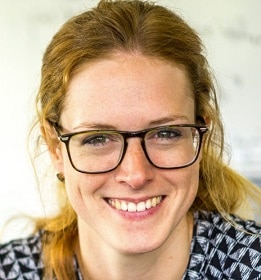
Sandra Schering
Sandra Schering headed the usability department at itemis AG from the end of 2016 to the end of 2019. She supported customers in the introduction and implementation of usability engineering methods, conducted usability training, e.g. in preparation for CPUX-F and CPUX-UR certification, and led teams through the design thinking process as a moderator. Since the beginning of 2020, she has been working as a Strategic UX Designer for the Signal Iduna Group.
